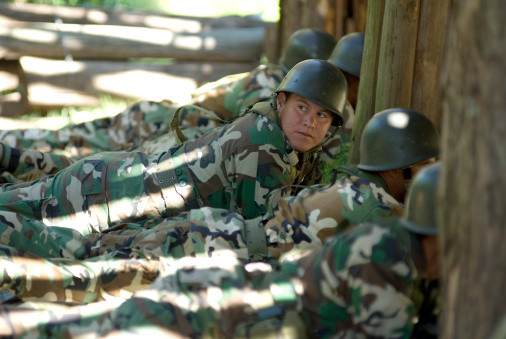
The largest ever combined military drills between the U.S. and the Philippines is being held a day after China wrapped up its extensive military exercises around Taiwan.
China's military practiced blockades of Taiwan over three days in response to the island's leader visiting the U.S. House Speaker last week.
China's show of force was slammed by Washington as being out of proportion, while Taiwan President Tsai called it "irresponsible" and asserted her right to travel to the U.S.
The U.S. drills had been planned earlier.
Officials from the Philippines and the U.S. claim that the exercises demonstrate their commitment to an open, free, and peaceful Indo-Pacific area, BBC reported.
Washington said last month that the annual Balikatan exercise with the Philippines would involve more than 17,000 troops, including 12,000 from the U.S., making it the largest one ever.
The armies will also practice detonating a simulated target warship in the South China Sea during the two-week Balikatan operation, which might anger China.
However, the exercises shouldn't be seen as a reaction to what's happening in Taiwan, according to U.S. and Filipino military officials.
Washington and Manila signed a new defense agreement in February, as part of which four new navy bases will be built on Philippine islands near territorial disputes.
Three of these bases are to the north of Luzon Island, the nearest bit of land to Taiwan besides China.
Some of the most important trade routes in the world pass through the waters around the Philippines and in the South China Sea, which have recently been the focus of China's contested territorial claims.
On Monday, Apr. 10, the U.S. sent a naval destroyer through the South China Sea in what it called a freedom of navigation mission, just as China was finishing up its own drills in which it had deployed fighter jets and an aircraft carrier around Taiwan.
The U.S. sent the USS Milius past the Spratly Islands, which lie in the Philippines' exclusive economic zone but are claimed by Beijing.
Beijing was enraged by this. China issued a similar warning on Monday, saying that U.S.-Philippines military cooperation should not meddle in issues in the highly disputed waters.
"[It] must not interfere in South China Sea disputes, still less harm China's territorial sovereignty, maritime rights and interests and security interests," Chinese foreign ministry spokesman Wang Wenbin said on Monday.
Beijing's drills came to an end on Monday. Following that, Taiwan's defense ministry declared that it would continue to improve its "combat preparedness."
On Monday night, President Tsai wrote on Facebook that she had the right to represent her island on a global scale and that China's military response to her U.S. stops had been "irresponsible actions of a regional power."
The Balikatan exercises, which are scheduled to go through Apr. 26, will also include participation from twelve nations in the area. Australia has dispatched 100 soldiers.
The focus of the Balikatan drills has evolved in recent years reflecting a shift in geo-security concerns in the region.
In the 2000s, it centered on counter-terrorism drills after extremist groups affiliated with al-Qaeda carried out bomb attacks in the southern Philippines.
However, a more extensive response has been called for in response to China's quick military buildup and territorial claims in the contested South China Sea, particularly on many Philippine islands.
The Philippines now plays a larger part in regional security.
In the case of armed conflicts over flashpoints like Taiwan or the South China Sea, many people think that enhanced U.S. access to Philippine bases could serve as launchpads for war operations.
Philippine President Ferdinand Marcos Jr reiterated on Monday that the U.S. would not be able to access military sites for offensive moves.
The U.S. is seeking access to places where "light and flexible" operations involving supplies and surveillance can be run as and when needed, rather than bases where large numbers of troops will be stationed.
In a deal that helped the U.S. close the gap in the arc of alliances extending from South Korea and Japan in the north to Australia in the south, Washington was granted access to four more military sites in the Philippines in February.
The Philippines, which borders two of the major possible flashpoints, Taiwan and the South China Sea, had been the missing piece.
One of the bases they now have access to faces Taiwan, the second the Scarborough Shoal, and the third the Spratly Islands. U.S. forces will arrive on a rotating basis in small groups.
The goal, according to analysts, will be to prevent China from extending its territory in the South China Sea while simultaneously giving the U.S. a location to monitor Chinese military activity near Taiwan.
© 2025 Latin Times. All rights reserved. Do not reproduce without permission.




